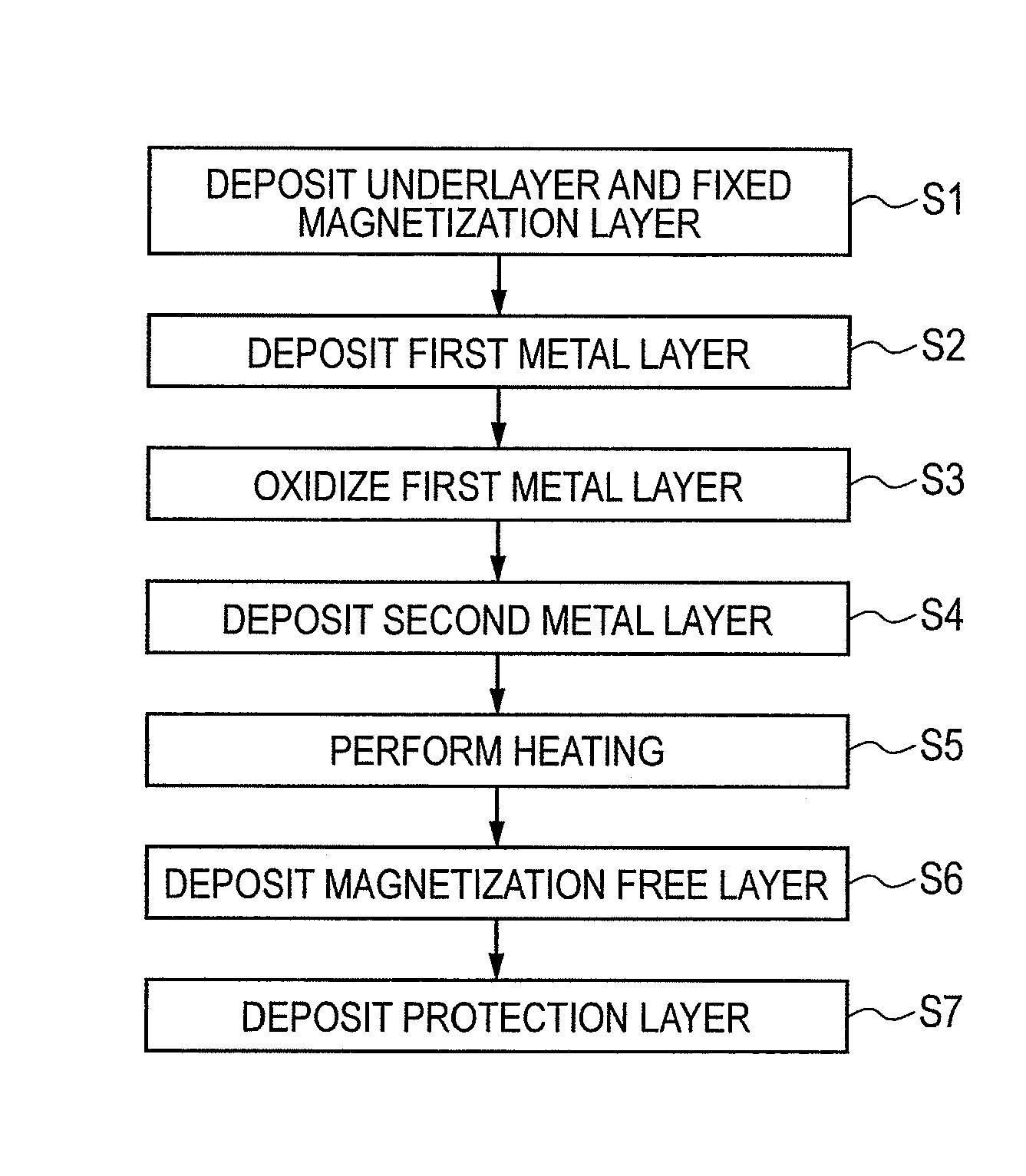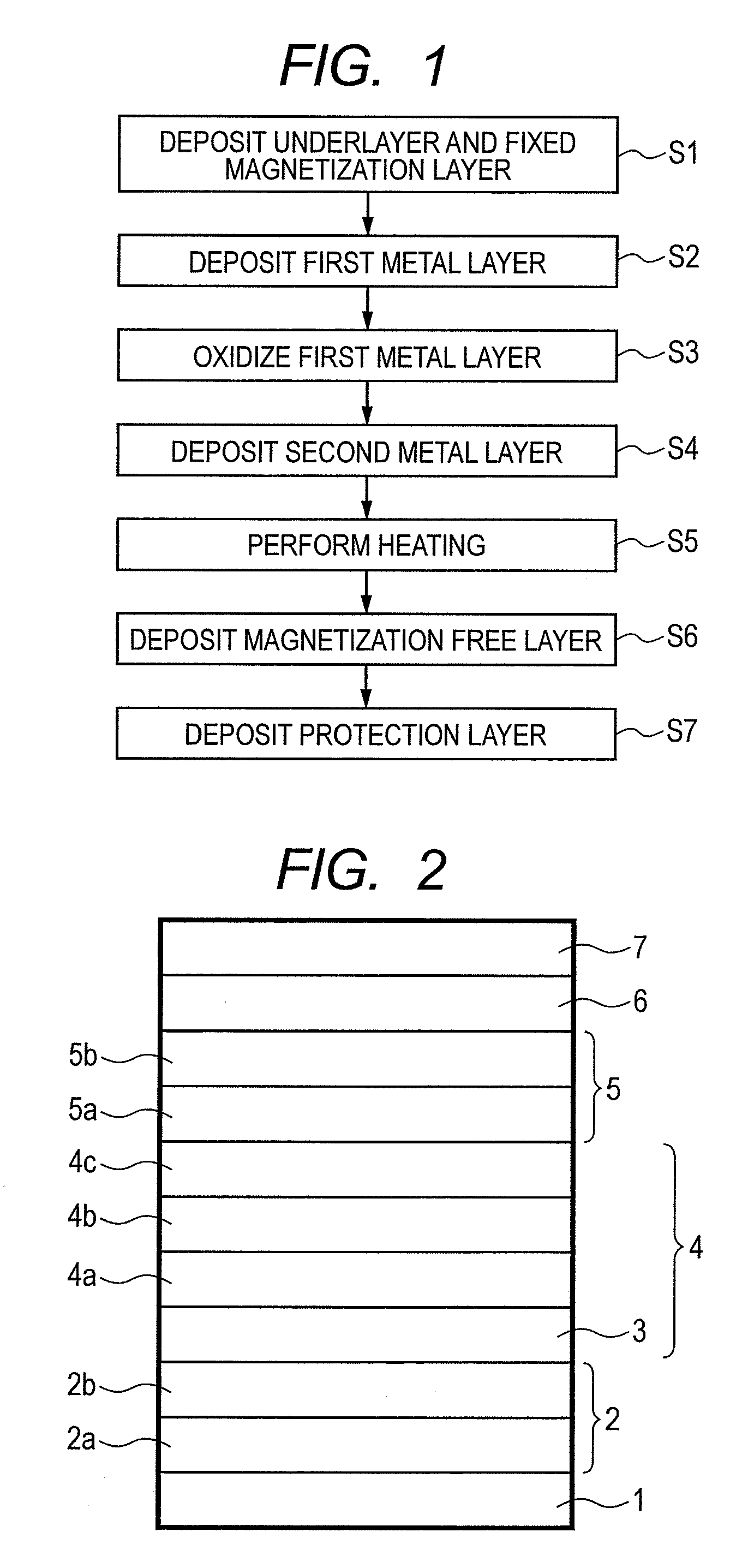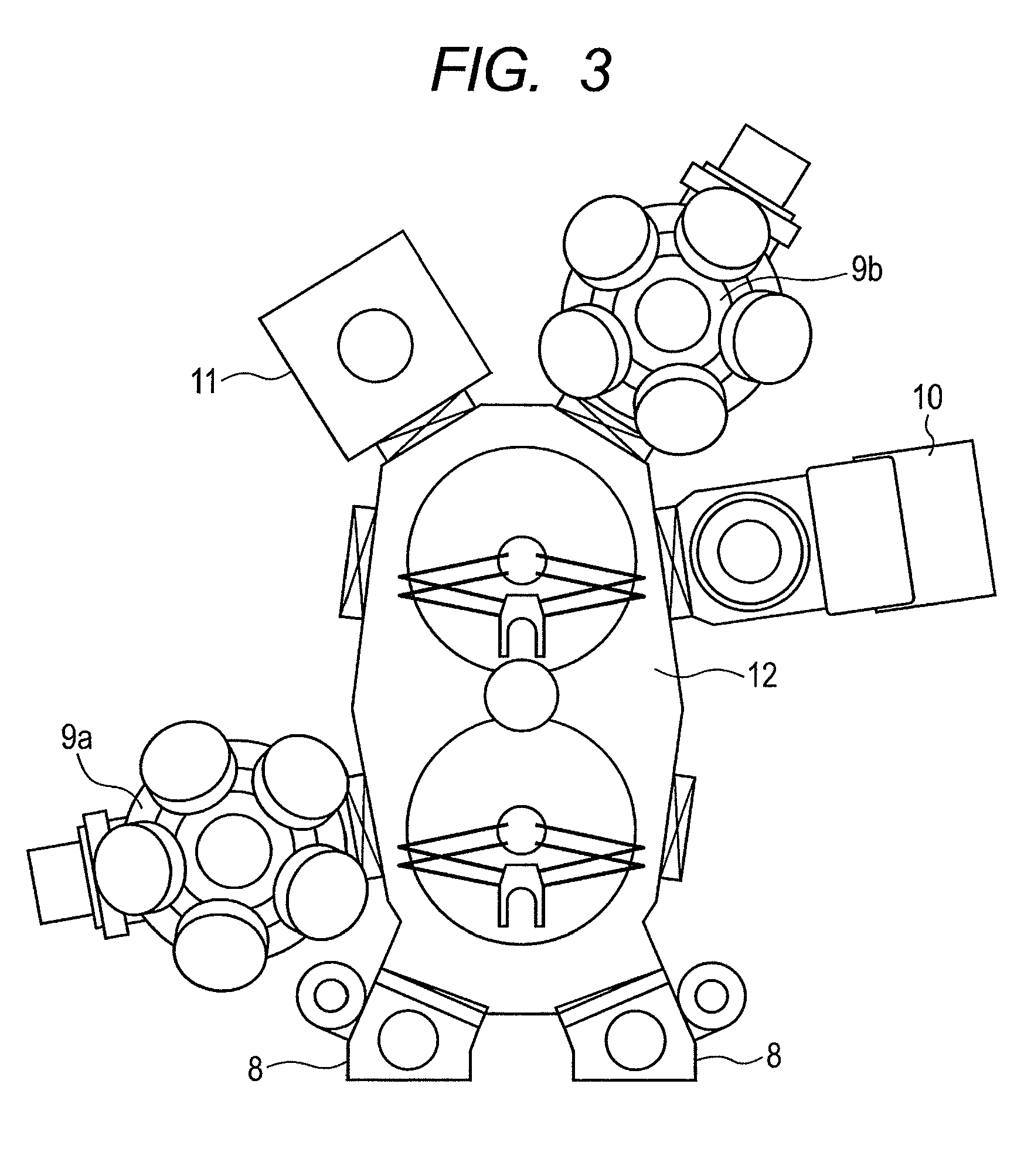Manufacturing method of magneto-resistive element
a manufacturing method and magnetoresistive element technology, applied in nanoinformatics, instruments, record information storage, etc., can solve the problems of low mr ratio, deterioration of electrical characteristics of tmr element, and large amount of particles, and achieve high mr ratio
- Summary
- Abstract
- Description
- Claims
- Application Information
AI Technical Summary
Benefits of technology
Problems solved by technology
Method used
Image
Examples
first embodiment
[0029]FIG. 1 is a flowchart explaining manufacturing steps of a TMR element according to the present embodiment. Further, FIG. 2 is a cross-sectional view schematically showing a configuration of the TMR element according to the present embodiment.
[0030]First, as shown in FIG. 1, an underlayer having a first underlayer 2a and a second underlayer 2b and a fixed magnetization layer 4 are deposited on a processing substrate 1 in step S1. For example, the underlayer configured with tantalum (Ta), hafnium (Hf), niobium (Nb), zirconium (Zr), titanium (Ti), molybdenum (Mo), tungsten (W), or the like, for example, is deposited having a thickness of approximately 0.5 to 5 nm on the processing substrate 1 as the first underlayer 2a of the multi-layered film. The second underlayer 2b containing at least one of elements such as nickel (Ni), iron (Fe), chromium (Cr), and ruthenium (Ru), for example, is deposited thereon in approximately 0.5 to 5 nm. An anti-ferromagnetic layer 3 configured with ...
example 1
[0054]A manufacturing method of a TMR element capable of obtaining a high MR ratio will be explained for the TMR element using the method of depositing the metal layer and thereafter forming the oxidation layer by oxidation treatment in the above described present embodiment.
[0055]In the present example, Mg was used for the first metal layer 5a and a first Mg layer was deposited in 1.2 nm as the first metal layer 5a. After that, the first Mg layer was oxidized and Mg (second Mg layer) was deposited in 0.4 nm as the second metal layer 5b. After that, TMR elements were fabricated and RA and MR ratios were measured for the case in which the substrate heating treatment (step S5 of FIG. 1) was performed at a temperature at which the second Mg layer evaporates (example 1) and the case of not performing the substrate heating treatment (comparison example 1). In the substrate heating treatment, a resistor was caused to generate heat and the substrate was heated by radiation. The substrate t...
second embodiment
[0063]In the present embodiment, the first metal layer 5a intentionally contains oxygen elements in the formation of the first metal layer 5a (the first metal layer 5a is doped with oxygen). That is, in the present embodiment, in the formation of the first metal layer 5a, oxygen gas is also introduced into the film deposition chamber and the first metal layer 5a is formed while oxygen is contained therein.
[0064]For example, when the first metal layer 5a is deposited by plasma sputtering, it is possible to cause the first metal layer 5a to contain oxygen atoms therein by adding oxygen to plasma formation gas in step S2 of FIG. 1. That is, a target of metal (e.g., Mg) which becomes the material of the first metal layer 5a is provided in the film deposition chamber, inert gas is introduced into the film deposition chamber and plasma is generated, and the first metal layer 5a is formed over the substrate 1 by plasma sputtering of the above target. In the above example, oxygen gas is int...
PUM
| Property | Measurement | Unit |
|---|---|---|
| thickness | aaaaa | aaaaa |
| thickness | aaaaa | aaaaa |
| thickness | aaaaa | aaaaa |
Abstract
Description
Claims
Application Information
 Login to View More
Login to View More - R&D
- Intellectual Property
- Life Sciences
- Materials
- Tech Scout
- Unparalleled Data Quality
- Higher Quality Content
- 60% Fewer Hallucinations
Browse by: Latest US Patents, China's latest patents, Technical Efficacy Thesaurus, Application Domain, Technology Topic, Popular Technical Reports.
© 2025 PatSnap. All rights reserved.Legal|Privacy policy|Modern Slavery Act Transparency Statement|Sitemap|About US| Contact US: help@patsnap.com



